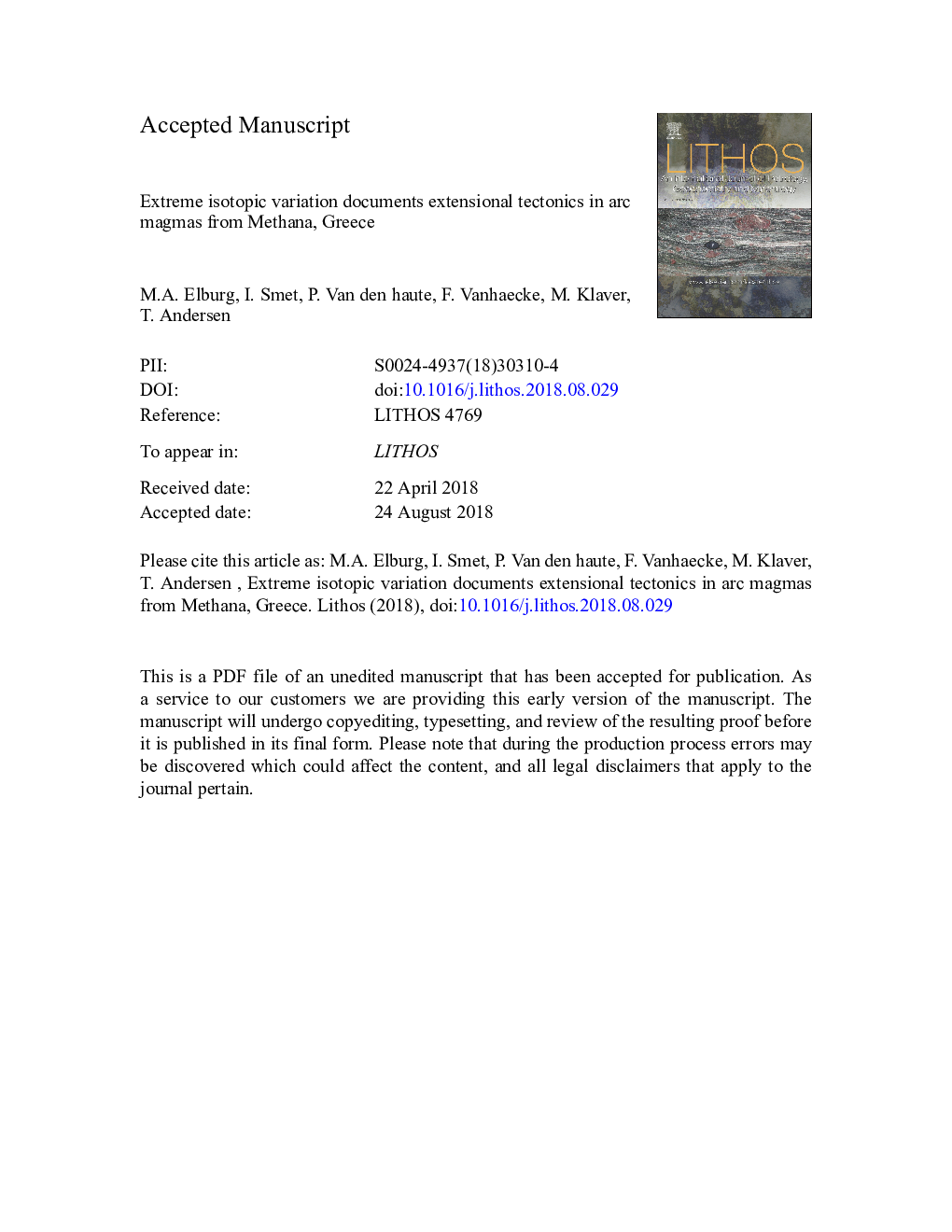| Article ID | Journal | Published Year | Pages | File Type |
|---|---|---|---|---|
| 10119977 | Lithos | 2018 | 55 Pages |
Abstract
New Sr-Nd-Hf-Pb isotope data for volcanic rocks from the peninsula of Methana (South Aegean Active Volcanic Arc, Greece) show a wide variation, and more 'enriched' isotopic signatures (e.g. elevated 87Sr/86Sr at 0.705-0.709) than those of other active Aegean volcanic centres, all located on thinner crust. The data set is best explained by polybaric AFC processes, with contaminants similar to country rocks and xenoliths, showing moderately high 87Sr/86Sr ratios, and with isotopically more evolved lower crust, similar to the pre-Alpine Ios basement. Pb isotope ratios show some minor influence of assimilation of fluid-altered volcanic cumulates. Intermediate lava domes with mafic enclaves were formed during periods of compression, whereas an extensional period saw the deposition of explosive products of bimodal composition, with the more felsic deposits showing the most pronounced influence of crustal assimilation. The latter likely represent stalled magmas from an earlier compressional period, which were remobilised and flushed out by ascending mafic magmas during extension. Recognition of these volcanological, geochemical and isotopic characteristics of deposits associated with extensional tectonics in a modern arc will enable us to use these criteria to infer paleo-tectonics from older volcanic deposits.
Related Topics
Physical Sciences and Engineering
Earth and Planetary Sciences
Geochemistry and Petrology
Authors
M.A. Elburg, I. Smet, P. Van den haute, F. Vanhaecke, M. Klaver, T. Andersen,
